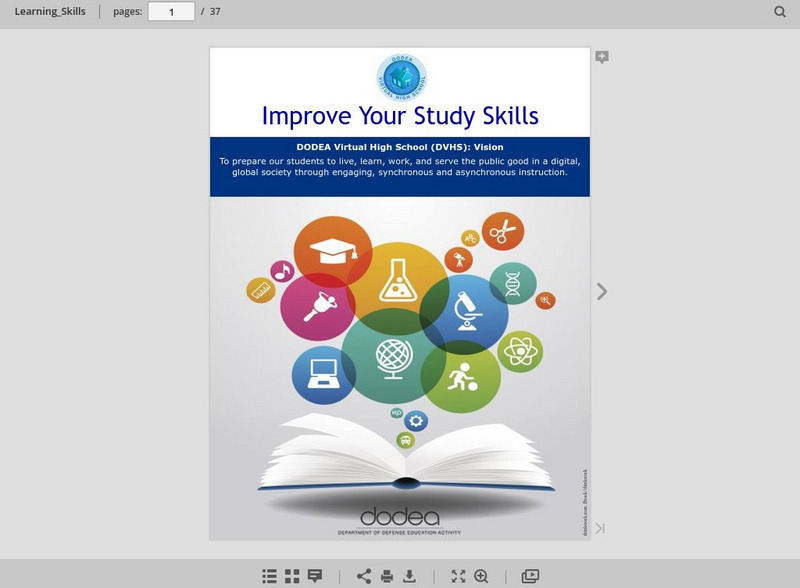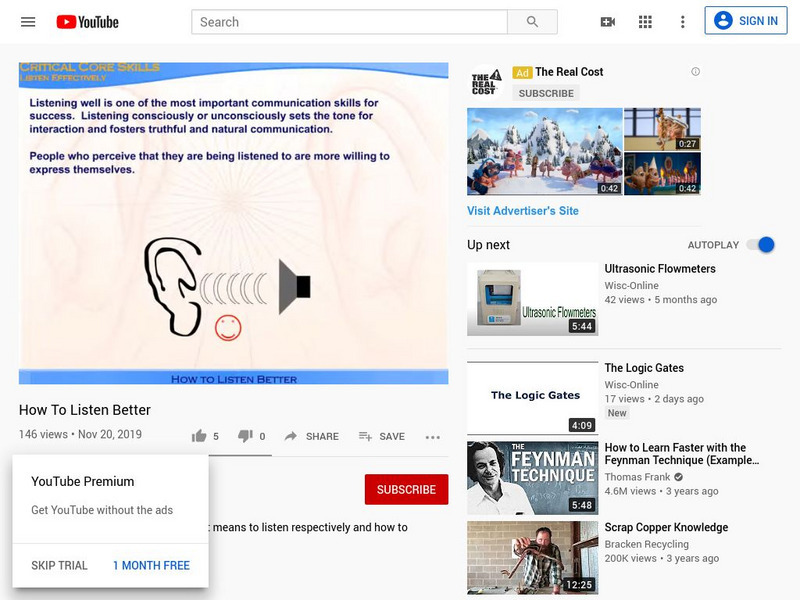Hi, what do you want to do?
Department of Defense
Do Dea: Improve Your Study Skills
Having trouble studying for tests or comprehending new material? This in-depth guide provides a multitude of ways to help you acquire reading and critical thinking skills necessary for understanding new material.
Wisconsin Response to Intervention Center
Wisconsin Rt I Center: Writing to Learn [Pdf]
Teachers will learn how to use Writing to Learn as a formative assessment tool. Teachers will learn how to implement the strategy, measure progress, and find research to support writing to learn. A list of Writing to Learn activities is...
Wisc-Online
Wisc Online: How to Listen Better
Students read a description of what it means to listen respectively. Then they write a brief action plan for becoming a better listener.
Library of Congress
Loc: Teachers: Personal Stories and Primary Sources
Students will explore the value of personal stories and first-hand accounts when exploring history, in this case, the events of the early twentieth century, which included World War I and the Great Depression. Through this five-unit...
University of California
Uc Irvine: Distinguishing Between Primary & Secondary Sources
This site has an online quiz to test your knowledge of primary and secondary sources.
Library and Archives Canada
Nlc: Defining Primary and Secondary Sources
Libraries and archives hold documents and books that can be used for your research projects. Learn how to divide and identify them into primary and secondary sources in this tutorial.






![Wisconsin Rt I Center: Writing to Learn [Pdf] Professional Doc Wisconsin Rt I Center: Writing to Learn [Pdf] Professional Doc](https://static.lp.lexp.cloud/images/attachment_defaults/resource/large/FPO-knovation.png)

